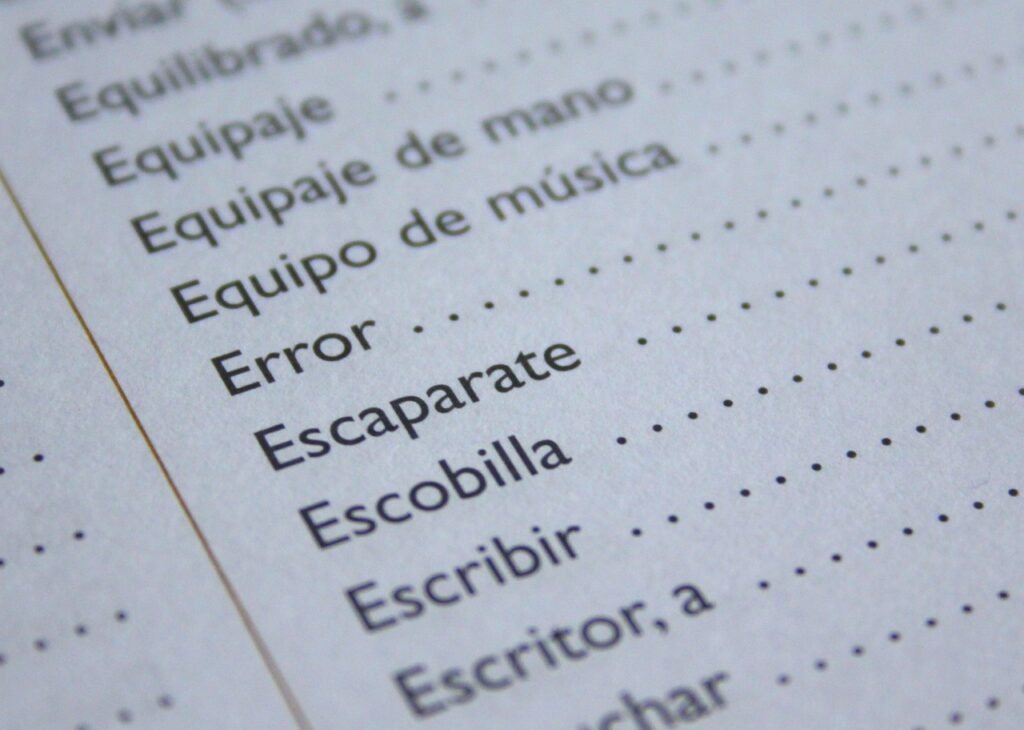When you sit down to structure a master’s dissertation, you’re not just following academic rules. You’re building the roadmap that guides your examiner through months of your research. A strong structure gives your work clarity, flow, and credibility. Without it, even good research can feel confusing or incomplete. Examiners expect more than correct formatting; they look for logic, coherence, and a clear link between your questions, methods, and conclusions.
This guide breaks down every section of a dissertation, from the title page to the appendices, and explains how to shape it into a story that makes sense. You’ll also see how structures vary across disciplines, and how to adapt them without losing that “golden thread” of your argument. By the end, you’ll have a practical, confidence-building framework to design a dissertation that is both rigorous and readable.
Preliminary Sections
1. Title Page
The title page may look simple, but it sets the tone for the entire project. A strong title is clear, specific, and signals exactly what your research is about. Avoid vague phrasing. Instead, use keywords that reflect your topic and methods. Think of it as the first promise you make to your examiner. If you want to structure a master’s dissertation that feels professional, start with a title that balances focus and originality.
2. Abstract/Executive Summary
The abstract is your research in miniature. In just 200 to 300 words, it should tell a reader what problem you studied, how you approached it, and what you found. It is not a teaser; it is a complete summary that allows someone to grasp your work without reading every chapter. When people search for how to structure a master’s dissertation, the abstract is often what convinces them that your work has value. Keep it precise, engaging, and concise.
3. Acknowledgements
Acknowledgements are optional, but they bring a human touch to your dissertation. This is where you can thank supervisors, peers, or family who supported you through the process. A short dedication can also fit here if you want to personalize your work. It will not affect your grade, but it matters for you as the writer.
4. Table of Contents
The table of contents is more than a list of page numbers. It is the roadmap that shows readers how your ideas unfold and how each chapter connects to the next. When you structure a master’s dissertation, clarity in the table of contents signals clarity in the entire project. Alongside the main headings, you may also need lists of figures, tables, or abbreviations. If your work uses specialized language, adding a short glossary helps readers stay on track.

5. Preface
Not every dissertation requires a preface, but when it is included, it carries weight. A preface is your chance to explain the scope of your work and why you chose to pursue it. Think of it as the personal doorway into your research. It can briefly cover your motivation, the boundaries you set, or the unique circumstances of your study. For students searching for how to structure a master’s dissertation, the preface may feel optional, but it can add context that enriches your reader’s understanding. In some cases, departments also ask for a formal scope statement. Whether personal or formal, this section gives your dissertation a sense of direction before the technical chapters begin, showing that your dissertation structure is intentional from the very start.
READ ALSO: 20 Reasons Students Fail Master’s Project Defense (and How to Fix Them)
Core Chapters
Chapter 1: Introduction
Background & Context
Every story begins with a setting, and your dissertation is no different. The background is where you show the world your topic lives in. Explain the field, the history, and the bigger picture so your reader knows why your work matters. When you structure a master’s dissertation, this part builds trust. It tells your examiner you understand where your study fits and that you are ready to add something new.
Problem Statement / Research Gap
Here, you point out the missing piece. What problem has not been solved? What question has not been answered? This is where you shine a light on the gap your research will fill. Without a clear gap, your work risks feeling like old news.
Research Aims and Questions/Hypotheses
Now you guide the reader to your goal. What exactly do you want to find out? Your aims should be clear, simple, and easy to follow. The questions or hypotheses show the path you will walk. Think of them as promises to your examiner. By the end, your conclusion must circle back and answer them. This part is the heartbeat of your dissertation.
Scope, Limitations, Definitions
Every project has boundaries. In this section, you explain what your study will cover and what it will not. The scope shows how wide your work will go, while the limitations admit where your research may fall short. Being honest here builds trust with your reader. Clear definitions are also important. If you use special terms, explain them early so no one feels lost. When you structure a master’s dissertation, these parts act like guardrails. They keep your study focused and help your examiner see that you know the strengths and limits of your work.
Overview of Structure
Think of this as a map for your journey. An overview shows your reader how each chapter connects to the next. You might say, “First, I review the literature. Then I explain the methods. After that, I share the results and discussion.” This small preview makes the whole project easier to follow.
READ ALSO: How To Complete Your Master’s Thesis FAST: A Step-by-Step 30-Day Plan with Mindset, Tools & Support
Chapter 2: Literature Review & Theoretical / Conceptual Framework
The literature review is where you step into the larger conversation. You show what other scholars have said about your topic, the main themes they agree on, and the debates that remain unsettled. Just as important, you point out the gaps—what is missing or overlooked. This is how you prove your work has a place and a purpose. When you structure a master’s dissertation, a strong review keeps your project grounded in real scholarship instead of floating alone.
The next step is your theoretical or conceptual framework. Think of it as the lens you use to study your topic. It might be a model, a theory, or a set of ideas that guide how you see the data. A clear framework makes your choices logical and your findings stronger.
Finally, the review should lead directly to your research questions. After showing what has been done, you explain what still needs answers. This natural flow ties your work to the bigger picture.
Chapter 3: Methodology / Research Design

Type of Research
This is where you explain how you will study your topic. Will you use qualitative research, like interviews and observations that give you rich stories? Will you use quantitative research, like numbers and surveys that show patterns? Or will you use mixed methods, combining both? When you structure a master’s dissertation, naming your type of research helps readers understand not only what you studied but also how you chose to study it.
How You See and Approach the Research
Every researcher has a way of looking at the world. Some focus on facts and measurements. Others look for meaning and experiences. Explaining how you see your topic shows your examiner that your choices are not random. They are guided by a clear perspective.
Data Sources, Sampling, and Case Selection
Here, you explain where your data comes from. Are you collecting it yourself or using existing sources? Who or what are you studying, and how did you decide? If you are interviewing people, why did you choose those groups? If you are analyzing texts or numbers, why are those the right ones? This section proves that your research is not only thoughtful but also fair. It shows you know how to structure a master’s dissertation with strong evidence at its core.
Data Collection Methods and Tools
This part explains how you will gather your information. Will you send out surveys, run interviews, or look at documents that already exist? Maybe you will use software to record and organize responses. Whatever tools you choose, make it clear why they fit your study. When you structure a master’s dissertation, your data collection shows the backbone of your research. Strong choices here help readers trust the story you are telling.
Analytical Methods
Once you have the data, you must show how you will make sense of it. Numbers might be studied with statistics. Interviews might be broken into themes and patterns. What matters most is that your method matches your questions. If you ask the right questions but use the wrong analysis, your results will not be convincing. Readers looking up how to structure a master’s dissertation often struggle here, but this step proves you can turn raw data into real answers.
Ethical Considerations, Reliability, and Trustworthiness
Good research is not only smart but also responsible. If you are working with people, you must protect their privacy and get consent. You also need to show that your findings are reliable. Will another researcher get similar results if they follow your steps? Will your readers believe your work is fair and honest? These issues matter as much as your results. A solid plan for ethics and reliability strengthens your dissertation structure and gives your examiner confidence in your work.
READ ALSO: How To Write A Winning Master’s Research Proposal: Step-by-Step Guide (+ Checklist)
Chapter 4: Results/Findings
This is the point where your research finally speaks. The results chapter is where you show what your data reveals in the clearest way possible. Organize your findings around your research questions or main themes so the reader can see how each answer connects back to your study. When you structure a master’s dissertation, this chapter is proof that all your planning and effort led to something solid.
Numbers, words, and patterns may appear to be too much, but you can make them easier to follow with tables, figures, and charts. Visuals should not be decoration. They should make your data easier to understand at a glance. Label them clearly and keep them simple.
Remember, this section is about reporting, not explaining. You hold back your thoughts for the next chapter.
Chapter 5: Discussion

This is the chapter where your research finds its voice. The results you shared earlier were the facts. Now, you explain what those facts mean. You place them side by side with the studies and debates you reviewed in Chapter 2 and ask, “How does my work fit into the bigger picture?” This is the heart of your argument. When you structure a master’s dissertation, the discussion connects raw data to real meaning.
Start by showing how your findings answer your research questions or test your hypotheses. Be clear. If your results confirm what you expected, explain why that matters. If they surprise you, embrace that too. Examiners respect honesty. Talking about unexpected findings shows you thought deeply and didn’t just chase the easy answer.
It is also important to admit limitations. Every project has them. Maybe your sample was small. Maybe you could not explore every angle. Limitations don’t weaken your work. They prove you know its boundaries and that you approached the study with care.
Finally, think about what your findings mean beyond the page. Do they add something to theory? Can they guide practice in your field? Could they influence policy or spark new research? This is where your study grows larger than itself. A strong discussion makes your work useful to others.
Chapter 6: Conclusion
The conclusion is where you bring your work full circle. After months of effort, this is your chance to step back and say, “Here is what I found, and here is why it matters.” Begin with a clear summary of your findings. Keep it short but strong. Highlight the points that matter most, the ones that directly answer your questions. This helps the examiner see that your study stayed focused from start to finish.
Next, show the contribution of your research. Maybe you filled a gap in the literature, added a new perspective, or tested an idea in a new context. Even a small step forward is valuable. A good conclusion makes it clear what your work adds to the field.
Be explicit when answering your research questions. Do not leave your reader guessing. Spell it out in plain words. This is where you prove that your dissertation did what it set out to do.
From there, look ahead. What should future research explore? What practical lessons can professionals or policymakers take from your findings? Sharing recommendations shows that your work is not just academic but also useful in real life.
Finally, close with reflections. This is your moment to speak honestly about the journey. What did you learn as a researcher? How did the process change the way you think? Reflections make your work human and memorable.
When you structure a master’s dissertation, the conclusion is not just the last page. It is the part that lingers. A strong ending ties the entire dissertation layout together and gives weight to your effort.
Alternative Structures and Variations
Publication or Article-Based Thesis
Some students write their dissertations as a series of published or publishable articles. Each paper stands alone, but the whole project still needs to feel connected. That is where the introduction and conclusion matter most. The introduction ties all the papers together and explains the big idea behind them. The conclusion looks back across every article and shows how they add up to one full story. If you want to structure a master’s dissertation in this way, the challenge is balance. Each piece must shine on its own while still serving the larger work.
Results and Discussion Together or Split by Theme
Not every study needs separate chapters for results and discussion. Some fields prefer to merge them. This allows you to show findings and explain them side by side. Other times, it makes sense to split the discussion into themes. For example, one section might focus on theory while another looks at practice. The key is clarity. Choose the dissertation layout that helps your reader follow your argument without confusion.
Case Studies, Multi-Site Studies, and Comparative Chapters
If your research covers more than one site or case, you may need to adjust the dissertation structure. Each case can be given its own chapter with results and discussion, followed by a chapter that compares them. This layout works well for social sciences and applied fields. It shows depth within each case and strength in comparing them.
Discipline-Specific Approaches
Different fields have different expectations. A dissertation in the humanities may focus on long, detailed arguments with fewer sections. In STEM, the work often highlights methods, data, and results in a tight format. In the arts, creative practice may be part of the research itself. Knowing your discipline’s style is vital when you structure a master’s dissertation. While templates are helpful, they are not one-size-fits-all. Always shape your chapters to reflect what your field values most.
These variations remind us that structure is not about rules for the sake of rules. It is about telling your story in the clearest way possible. The best dissertation layout serves your research, your discipline, and your reader all at once.
Supplementary Material
Reference List/Bibliography
The reference list is where you give credit to every book, article, and source that shaped your study. It may feel like a simple task, but it shows your examiner that you respect the work of others and that your own research stands on solid ground. The key is consistency. Pick a citation style, like APA or MLA, and use it the same way from start to finish. Even small errors can distract a reader and make your work feel careless. When you structure a master’s dissertation, a clean and accurate reference list ties the entire dissertation layout together. It proves you are detail-oriented and committed to academic honesty.
Appendices
The appendices are like a storage space for materials that support your research but do not fit in the main chapters. You might include interview questions, detailed tables, survey forms, or raw data. These extras add depth without crowding your main discussion. Think of them as your backup evidence. Examiners may not read every appendix, but they value having the option. Strong appendices also make your dissertation structure look more complete. They show you were thorough and transparent about how you gathered and presented your findings.
Glossary

A glossary may not seem exciting, but it can make your dissertation easier to read. Here, you list abbreviations, symbols, or special terms that appear often in your work. Imagine an examiner picking up your paper for the first time. A glossary helps them move smoothly without stopping to guess what each short form or symbol means. It shows that you thought about your reader and wanted to guide them clearly. When you structure a master’s dissertation, even these small details shape the quality of your dissertation layout. They help your work feel professional and welcoming at the same time.
Ethical Statements
An ethical statement is where you show your care for the people, data, and ideas that shaped your research. If you worked with human participants, you explain how you gained consent and kept their information safe. If your field requires it, you may also share a note on data availability, telling readers where or how your data can be accessed. This openness builds trust. It proves that your research is not only valid but also respectful. A clear ethical statement strengthens your dissertation structure because it highlights integrity as much as insight.
Formatting, Layout, and Presentation Tips
Margins, Font Size, Line Spacing
These details may appear small, but they shape how your dissertation is read. Wide enough margins give space for feedback and make the pages easier on the eyes. A clear font, often 12-point Times New Roman or Arial, keeps your text readable. Proper line spacing, usually double, avoids a cramped look. When you structure a master’s dissertation, these choices are not about style alone. They show care and respect for your examiner. A neat page says you value the work you have done and the person reading it.
Headings and Subheadings
Headings act like signposts. They guide your reader through each section without confusion. Subheadings break long chapters into smaller, clear parts. Together, they make your argument easy to follow and give shape to the entire dissertation structure. Imagine walking through a city without street signs. That is what reading a paper without clear headings feels like. Strong headings make your dissertation layout both logical and inviting.
Figures, Tables, and Captions
Figures and tables are powerful tools. They turn complex information into something simple and visual. But placement matters. Put them close to the text that explains them so your reader does not have to flip pages back and forth. Always include captions that explain what each figure or table shows. Captions should be short but clear enough that even without the text, the visual makes sense. Used well, visuals strengthen how you structure a master’s dissertation because they make your findings easier to see, understand, and remember.
Consistent Citation Style
Citations may seem like the quiet part of your work, but they speak loudly about your discipline and care. A consistent citation style shows that you paid attention to detail from start to finish. Whether you use APA, MLA, Chicago, or another style, the key is to stick with it. Every book, article, or source should look the same in your reference list and in your in-text citations. Inconsistency distracts your reader and makes your work look rushed. When you structure a master’s dissertation, clear and steady referencing is not just a rule. It is proof that you value honesty and respect the voices that shaped your study. A strong dissertation structure is built on both your ideas and the ideas you credit properly.
Your Page Numbering
Page numbers may feel like a small detail, but they help your reader find their way through your work. Most universities ask you to use Roman numerals (i, ii, iii) for the preliminary sections such as the abstract and table of contents. Once you begin the main chapters, you switch to Arabic numbers (1, 2, 3). This simple system keeps the dissertation layout organized and easy to follow. Imagine flipping through a long paper without numbers. It would be frustrating. Proper page numbering shows that you thought about the reader’s experience, not just your own writing. It is another way you show mastery when you structure a master’s dissertation.
READ ALSO: 15 Common Academic Project Writing Mistakes Students Make (And How to Avoid Each One Like a Prof.)
Maintaining Coherence
Keeping Your Research Questions Alive in Every Chapter
Think of your research questions and aims as the heartbeat of your dissertation. They should not only appear in Chapter 1 and then vanish. Instead, they need to guide every part of your writing. In the literature review, you show how past studies connect to your questions. In the methodology, you explain how your design helps you answer them. In the results and discussion, you come back to those same questions and show what you discovered. When you structure a master’s dissertation, weaving your questions through each chapter keeps your argument strong and focused. A solid dissertation layout proves that you stayed on track and never lost sight of your purpose.
Your Building a Logical Flow from Start to Finish Heading

A dissertation should feel like a journey, not a puzzle. The introduction sets the stage by showing the problem. The literature review explains what others have said and where the gaps are. The methods chapter tells how you carried out your research. The results share what you found, and the discussion explains what it means. Finally, the conclusion ties everything together. Each step leads naturally to the next, like links in a chain. A strong dissertation structure makes the reader feel guided, not lost. When you structure a master’s dissertation with this flow in mind, you create a story that feels complete and convincing from the first page to the last.
Signposting and Transitions Between Chapters
Imagine reading a story where each chapter feels disconnected from the last. You would quickly lose interest. That is why signposting is necessary. At the end of each chapter, give your reader a small preview of what comes next. At the start of the next chapter, remind them where they left off. Inside chapters, use simple transitions to link one section to another. These little signals guide your examiner through the journey without confusion. When you structure a master’s dissertation, smooth signposting makes your dissertation layout flow naturally, showing that every piece belongs exactly where it is.
Avoiding Redundancy and Keeping Focus Attractive Heading
Repeating the same points again and again weakens your work. Instead, aim for clarity. Say something once, say it well, and then move forward. Your examiner should feel like each page adds value, not like they are walking in circles. Staying focused also means resisting the urge to chase ideas that don’t connect back to your research aims. A strong dissertation structure is lean and purposeful. When you structure a master’s dissertation with focus, every section feels like a step toward the conclusion rather than a detour. This discipline makes your writing sharper and your argument stronger.
Working with University/Department Guidelines
Every school has its own rules for dissertations, and those rules come first. Before you start writing, check your department’s handbook or official website. These regulations cover details like word limits, formatting, and required sections. Ignoring them can cost you marks, even if your research is strong. When you structure a master’s dissertation, following the rules shows respect for the process and gives your examiner fewer reasons to mark you down.
Many departments also provide templates or sample dissertations. These are more than examples. They are roadmaps. Look closely at how the chapters are arranged, how references are formatted, and how headings are used. Then adapt the template to your own project. It is not about copying. It is about shaping your dissertation layout so it fits your topic while still meeting the standards set by your program.
Sometimes your research may not fit neatly into the usual mold. Maybe you are working with creative practice, case studies, or mixed methods that need a different approach. In that case, speak with your supervisor. Explain why a small change in dissertation structure will help your project tell its story more clearly. Examiners are open to flexibility when you show that your choices are thoughtful and purposeful.
In short, the rules guide you, but they don’t have to silence your voice. When you balance compliance with creativity, you structure a master’s dissertation that is both academically sound and uniquely yours.
Conclusion & Quick Checklist
A strong dissertation is not just about research. It is about how you present it. When you structure a master’s dissertation well, you guide your reader step by step, from the opening page to the final reflection. The right dissertation structure creates clarity, flow, and trust. The right dissertation layout makes your work easy to follow and shows that you respected both the process and your examiner’s time.
Before you submit, pause and check the essentials one last time.
Quick Checklist
- Does the introduction clearly state the background, problem, and aims?
- Is the literature review connected to your research questions?
- Does the methodology explain your choices and tools clearly?
- Are the results presented without mixing in interpretation?
- Does the discussion explain meaning, limits, and implications?
- Does the conclusion answer the questions directly and highlight contributions?
- Are references consistent and complete?
- Are appendices, glossary, and ethical statements in place?
- Is the formatting clean, with correct margins, headings, and page numbers?
- Does each chapter flow into the next without gaps or repetition?
If you can say yes to these, your dissertation is not only finished. It is ready to make a lasting impression.
Need expert guidance to make your dissertation shine? Let Academic Craft help you structure, write, and finish with confidence. Click here to reach out to us today!



